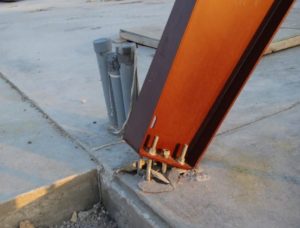Steel Jacketing of Columns
In the quite the literal sense, columns are the pillar that make every structure stand. So as a property owner, its maintenance must be your utmost priority to ensure that it stands for the foreseeable future. But since all structures deteriorate over time, minor repairs will become major repairs until it all crumbles down. But the good news is you can prolong this vicious cycle just by making the right decisions. This can be done with steel jacketing.
These decisions revolve around what is the cheaper and more effective approach in the long run. You have two choices, between doing consistent maintenance for many years or opting for major repairs once in a while.
As a property owner, the best economical and practical choice for you is do major repairs once a year. Why? First off, if you tally all the cheap expenses needed for a consistent maintenance for many years, it becomes more expensive in the long run. Second, major repairs are done only once a year with higher upfront cost. Though less enticing due to high upfront cost, it pays itself back in the long run in the form of no meaningless repairs and better convenience. Who wouldn’t want that?
So as a business choice, you may want to have your property inspected by structural engineers and repair specialists at Structural Builders. Wouldn’t you want an advantageous position on the negotiating table once you decide to sell your property? Have it restored first to acceptable condition.
During which, Structural Builders will help you out. If the columns of your property has undergone severe deterioration or damage, we will restore it to its original condition by a method called column jacketing.
Types of Column Jacketing
- Concrete Jacketing: A means of strengthening existing columns by increasing its cross-sectional area with a stronger concrete material.
- Steel Jacketing: Same as concrete jacketing but differs in the materials used. Instead of concrete, it’s jacketed with a steel plate jacket with concrete or epoxy mortar in between.
- CFRP Wrapping: A means of strengthening existing columns by wrapping a strong layer of carbon fiber reinforced polymer.
In this article, we will be focusing on our proven and tested work-flow methodology about steel jacketing of columns. We have done this countless times for many number of clients already and all were a success!
Our Methodology for Steel Jacketing of Column
Step 1: Restrict the area above, below, and adjacent areas.
Step 2: Provide shoring support on the adjacent area and the floor below the area.
- The column shouldn’t be subjected to forces during retrofitting so the transfer of loads is taken care of the shoring supports.
Step 3: Install working platform with access to the whole column height.
Step 4: Surface preparation.
- Roughen the concrete substrate using chipping gun and remove the concrete covering to expose the vertical rebars for good mechanical bonding.
- Apply a new anti-corrosion coating for the existing rebars.
Step 5: Drill holes intended for bolts of steel plate jackets and clean thoroughly by sandblasting or high-pressure air blower.
- Spacing of holes depends on the structural design.
Step 6: Install the steel plate jacket together with all the accessories (bolts, nuts, washers, etc.)
- Weld the plates wherever possible.
Step 7: Fill the space between the existing concrete surface and steel plate jackets with concrete.
- If thickness is large, say more than 50 mm, use concrete with small aggregates.
- If thickness is less than 50 mm, use epoxy mortar.
- Prior to execution, have the structural engineer approve the type of materials to be used.
Step 8: Curing.
Step 9: Inspection.
Conclusion
In summary, jacketing of columns consists of added concrete complete with longitudinal and transverse rebars around the existing column. But in the case of steel jacketing, the rebars’ purpose is taken by the steel plate jackets. This type of strengthening improves the structural capacity of the column (axial and shear strength).
This method, along with the other column jacketing methods are a cost-efficient way of retrofitting an existing column as compared to doing countless minor repairs consistently. Once retrofitted, it will be a long time again before it manifests structural problems.

